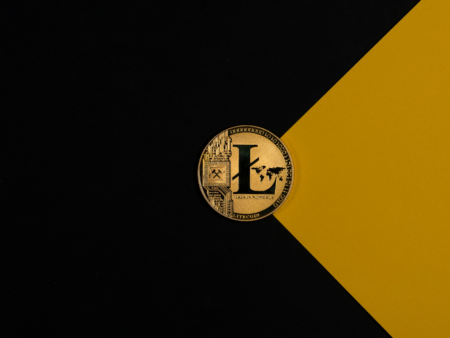The popularity of liquid staking derivatives (LSDs) has increased significantly in recent months resulting in a surge in cash flow in DeFi. LSDs are a relatively new type of token that enables stakers to augment potential returns by unlocking liquidity for their staked cryptocurrency, such as ETH
A technique for converting illiquid-staked assets into liquid ones is known as liquid staking. This indicates that liquid staking offers the same advantages as staking while giving these assets value.
Liquid staking’s key advantage is that it releases assets that would otherwise be locked. This advantage does, however, have significant dangers. Token de-pegging, which refers to a circumstance in which the locked token and its derivatives have unequal value, is one of these hazards.
Fortunately, by taking precautions during the staking procedure, this risk can be reduced. This is the definitive manual on liquid staking, yet there is still so much more to learn.
Liquid Staking: What Is It?
It is impossible to separate the rise of Proof-of-Stake consensus techniques from the popularity of liquid staking. Validators must stake a particular number of tokens on a blockchain that employs Proof-of-Stake consensus processes. The blockchain’s hierarchy of validators is determined by these tokens.
Additionally, the tokens act as insurance for negligent or dishonest validators. These validators’ tokens will be sliced, acting as a deterrent to dishonest activity. This approach does have a serious flaw, though.
In order to have a chance to validate on the chain, Proof-of-Stake needs validators to lock enormous quantities of tokens. This is comparable to locking money away in a savings account in order to earn interest.
The issue with this is that owners of these tokens typically have more opportunity to profit from their holdings. Many investors discover that Proof-of-Stake prevents them from taking advantage of these chances.
Other DeFi projects, such as lending, need users to lock their tokens aside from Proof-of-Stake. The same issue with Proof-of-Stake is present in these projects; users must lock their tokens. Once more, many investors will find that this arrangement is not ideal.
The crypto ecosystem’s response to this issue is liquid staking. Simple rules govern how liquid staking operates. On behalf of the owner, a liquid staking service stakes the tokens that need to be staked. Following that, the supplier offers a receipt, typically in the form of derivatives. These derivatives can be sold or used as collateral elsewhere and are equal to the staked tokens.

Why Do People Buy Stock?
People employ liquid staking mostly because it enables them to spend or use their tokens while they are staking them. The primary benefit of liquid staking is how quickly investors can react to rapid market swings because to its immediate liquidity. This is a crucial advantage for investors to have because the cryptocurrency market is infamously unstable.
Liquid staking shields customers from several staking-related hazards in addition to offering immediate liquidity. Investors that stake using the standard procedure frequently assign a validator control over their coins. The staked tokens are only delegated to this validator; it does not assume ownership of them. The person who receives the tokens ideally receives a portion of the rewards for staking as compensation.
However, if the validator has prolonged outage and is unable to validate properly, the staked tokens are lost. Users may suffer severe losses as a result of this.
But if the tokens are assigned to liquidity providers, this danger can be eliminated. The potential losses from slashed tokens are dispersed across the pool since liquidity pools frequently transfer staked tokens across many nodes.
Derivatives also make it simpler for you to recover your staked tokens, which is another advantage. Investors must wait a certain amount of time before being able to unstake their tokens on many blockchains. For instance, on Polkadot, investors must wait until the end of a required 28-day unbonding time before they can unstake their tokens.
For those who need their tokens right away, they may easily exchange them for original tokens on the open market at a small discount.
Liquid Staking Risks
There are risks associated with liquid staking. Liquid staking’s main danger is that the derivatives’ value could diverge from the value of the original tokens.
Derivatives have the drawback of not being algorithmically automatically anchored to original tokens. The market allows for the unrestricted exchange of derivatives, and market forces alone set their prices. This indicates that during a downturn market or a liquidity constraint, these derivatives may start selling for significantly less than their original tokens.
Additionally, this is not only a doomsday scenario. When the chain crashed, derivatives in the Terra ecosystem depegged almost simultaneously. Investor losses amounted to millions of dollars as a result. Due to market pressures, the stEth token, a derivative of ETH, also depegged from ordinary ETH by around 7% in June 2022.
One nearly immediately loses access to their initial tokens when a significant depeg occurs. Even if they are able to exchange their derivatives for the assets they have staked, the value of the underlying assets they acquire will be drastically reduced. This is a significant risk that is not present with conventional staking.
The fact that liquid staking opens the door to centralization represents another concern. Many staked tokens are available to liquidity pools, who can assign these tokens to various stakers. If the pool grows large enough, it might potentially seize control of the blockchain and consolidate its administration.
Lack of excessive liquidity with derivatives is typically another danger associated with liquid staking. For instance, the daily trading volume for ETH is in the billions of dollars. The most liquid staking derivative, stETH, with a trading volume just exceeding $20 million per day. Investors must therefore understand the market they are entering and whether the derivatives they purchase may result in a liquidity constraint.
Finally, smart contracts are where most liquidity staking takes place. As a result, investors run the danger of signing faulty smart contracts and being duped. For this reason, it’s crucial to pick liquidity providers with a solid market reputation or, if it’s possible, double-check the smart contract.
Staking Protocols for Liquids

Investors who want to practise liquid staking should start by staking utilising well-known and established protocols. These measures nonetheless pose substantially fewer hazards while not being faultless.
Cardano is one blockchain that already has liquid staking enabled by default. Others, like Polkadot and Solana, on the other hand, depend on outside initiatives to support their liquidity staking.
The most valuable staked and liquid staking token is Ethereum. There are numerous liquid stake providers on Ethereum as well. Lido Finance, Rocketpool, Frax Finance, Cream, Stakehound, Ankr Staking, and Stakewise are a few of these providers.
Finance Lido
The largest of the group, Lido Finance, issuing staked ETH, or stETH for short, the largest liquid staking derivative.
Since Lido was the first company to offer liquid staking, its market share has increased as a result of its pioneering role in the ecosystem. The DAO treasury and the mode operators receive 10% of the staking rewards, which they charge on the staked assets.
With approximately $7 billion in Ethereum secured, Lido is now the largest protocol on Ethereum in terms of Total Value Locked (TVL). Rocketpool, its next rival, bare minimum has up to a billion dollars in Ethereum locked.
The second-largest staked liquidity provider in the world is Rockpool, and the protocol holds around 5.5% of total ETH staking deposits. The Rocketpool ETH derivative that is given to stakeholder is known as rETH.
Rockpool
Rocketpool immediately distributes to node operators the roughly 5-20% of staked token earnings that it receives. The Rocketpool protocol’s governance token, RPL, must be purchased in order to operate a node. The payment of this RPL keeps Rocketpool’s administrative system in good working order.
Finance Frax
In the market for liquidity-staking providers, Frax Finance is a rising star. This is due to the fact that staking with Frax yields about 6%–7% in ETH whereas other services only give 5%. Users must stake the Frax derivative, frxETH, in order to acquire sfrxETH, which increases in value by roughly 6.63% annually.
Liquid Ethereum Staking
On the Ethereum blockchain, liquidity staking is very common for a number of reasons. The first is that until the Shanghai upgrade, ETH may only be staked in 32 ETH increments and cannot be unstaked. This implies that those who wish to unstake their Ether must first acquire Ether derivatives through liquid staking before exchanging them on the open market.
The inability of ETH stakers to assign their tokens to validators is another factor contributing to the rise in popularity of liquid staking on Ethereum. Before the tokens may be staked, the validator must be in possession of them. As a result, liquid staking pools must do more to lower the barrier to entry for new investors in the staking industry.
Are liquid stakes secure?
Liquid staking offers advantages and disadvantages, much like every other investment method in the cryptocurrency ecosystem. When used appropriately, staked tokens and derivatives can help investors make a sizable profit.
But the opposite is also possible. Investors who sell their stakes during unfavourable market conditions risk suffering significant losses. It’s crucial to realise that liquid staking still involves some level of risk and is unquestionably riskier than conventional staking. DeFi is a financial market, nevertheless, and with greater risks come greater rewards.
Investors who aren’t willing to take risks should stay away. At the same time, individuals who take action ought to benefit from it or suffer the repercussions.
On the other hand
- Although it is theoretically feasible for someone to take control of a blockchain through staking, this is currently a remote possibility.
Why It’s Important
One of the major marketplaces in cryptocurrency right now is liquid staking. It is incredibly profitable and might become much more so in the upcoming years. Therefore, it is crucial to fully comprehend it now in order to perhaps get an advantage afterwards.











